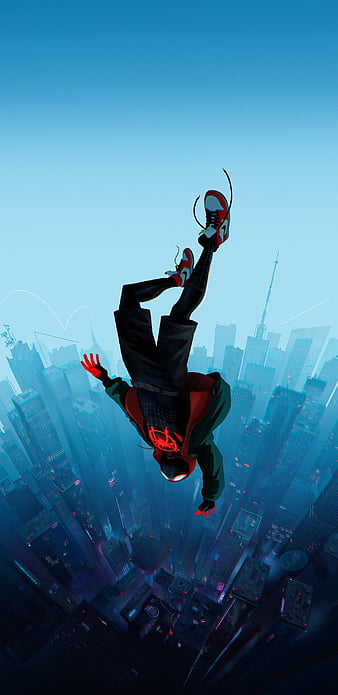Spider-Verse Effect Changes Animation

 by Dasun Panapitiya ‘24
by Dasun Panapitiya ‘24
Animation is a revolutionary medium, first popularized by Disney animated shorts and films like Steamboat Willie (1928) and Snow White and the Seven Dwarfs (1937). In comparison to the very limited creativity of live action at the time, animation represented a fantastical experience capable of allowing entertainment to bloom. Then, the growth of 3D animation through Pixar’s iconic Toy Story (1995) revolutionized entertainment once again. Later on, the increased use of computer-generated imagery (CGI) in live action films would influence animation to strive towards realism, forgoing its previous exaggerated elements.
The 2010s shifted away from this trend of hyperrealism with the release of the Disney short, Paperman (2012), and Sony’s hit feature film, Spider-Man: Into the Spider-Verse (2018). The animation style shared by these films blend traditional hand-drawn animation with computer-based 3D animation. Not only did Spider-Verse introduce this experimental and obscure method of animation to the public eye, but it was also executed in a memorable manner, incorporating elements such as frame-rate changes and Ben-Day dots to make the movie resemble a comic book. Animation previously strived toward hyperrealism, but this movie reminded people of what animation really was: exaggerative and entertaining art.
Spider-Verse’s popularity allowed it to be renewed for a sequel, Spider-Man: Across The Spider-Verse, which comes out this year on June 2. Recently, its influential art style has been seen in movies like The Mitchells vs. the Machines (2021), Kid Cudi’s Entergalactic (2022), and Dreamworks’ Puss in Boots: The Last Wish (2022). Chris Miller and Phil Lord are the founders of this “Spider-Verse” effect, as many reviewers call it. In an interview with Vulture, Danny Dimain, a visual effects (VFX) supervisor, explained how Miller and Lord “wanted to find a new visual language with which to tell superhero stories.” They ensured that the animation was out-there, but not so much that it became disconnected from the story. Lord and Miller previously worked on 2014’s The Lego Movie and were the minds behind its entirely Lego based world, from the water to the sky. It was one of the aspects that made that movie so special, so they have some credibility when it comes to making a world come to life.
Many argue that Spider-Verse didn’t just change animation, it saved it. Fans of animated movies and critics alike have started getting tired of multimedia conglomerates like Disney using 3D animation and hyper realistic environments. In an interview with Polygon, Pierre Perifel, director of 2022’s The Bad Guys, said, “Because I find [usual CGI] … ‘boring’ is probably excessive, but I want to see something different” when explaining his deviation from standard animation in his film. While realism may have worked to obtain positive reception decades ago, it now feels overused and formulaic. Whereas Disney movies moved toward utilizing life-like animation, Lord and Miller made animation come to life. Spider-Verse made the animation landscape aware that everything does not need to look realistic in order to be good.